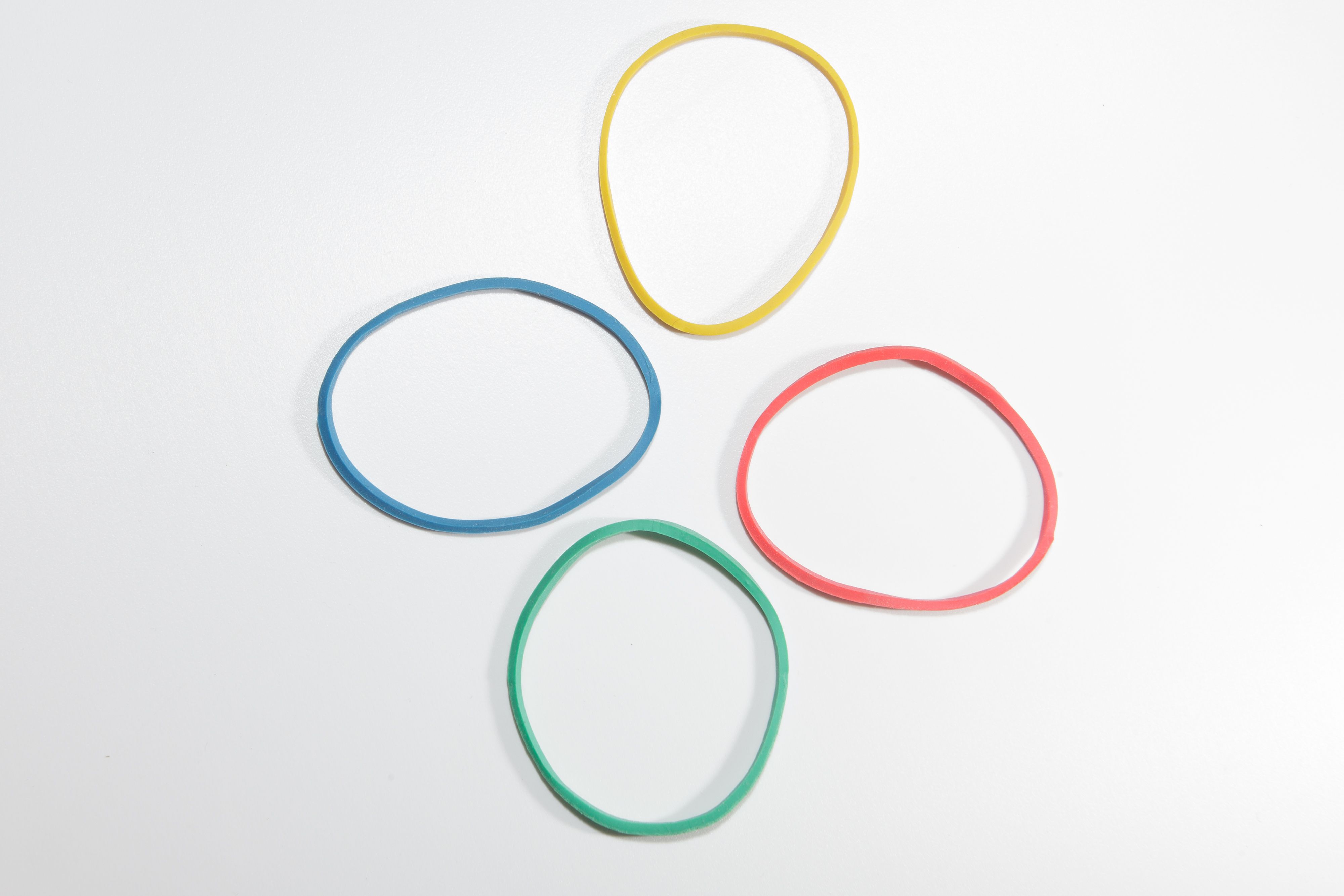Whether you’re holding onto your dog’s leash for dear life or you’re trying to open up that pickle jar, there’s a term you should be familiar with: grip strength! Grip strength has a place both in IRL and
in the gym, where it helps you carry weights with confidence and hold up the bar without experiencing as much wrist tension or pain.
That’s just the beginning of the perks of training your grip. “Having good grip strength will help you focus on proper form and mechanics, which means you’ll be able to push yourself to necessary fatigue levels,” says Kat Ellis, CSCS, coach at The Fort in New York City. This means that when you’re lifting so heavy that the weight slows you down during the last few reps, you’ll have more control when powering through—making the moves that much more effective in working your muscles.
Meet the experts: Kat Ellis, CSCS, is a coach at The Fort in New York City. Liana Tobin, CSCS, is a personal trainer educator for the National Strength and Conditioning Association. Mike Simone, CPT, is the founder of Human Fit Project. Angela Gargano, CPT, is a NASM-certified fitness coach and four-time Ninja Warrior.
And yep, researchers agree. Hand grip strength can be a great predictor of overall muscular and strength endurance, per research in the Journal of Clinical and Diagnostic Research. It’s also an indicator of overall health and well-being in older adults, meaning that it becomes all the more important to maintain as you age.
Beyond fitness, grip strength is associated with your risk for cardiovascular disease and death. “Grip Strength is important in maintaining mobility and independence as we age,” says Angela Gargano, CPT. “It helps with opening jars, carrying groceries and turning doorknobs a lot of things we take for granted. A person with strong grip is likely to have a lower risk of chronic diseases, such as heart disease and diabetes, as well as better overall physical function.”
Now that you know how integral grip strength is to your overall wellness today and in the future, read on for everything you need to know about strengthening it to reap all the benefits at home and in the gym.
What is grip strength, exactly?
Simply put, grip strength is how well you can hold onto something with your hands, says Gargano. It’s a measure of how much force or power you can create with your forearm and hand muscles.
Having a strong grip is a good indicator of upper-body and overall strength because you need to be able to hold onto weights in order to increase muscle strength. Weak hand and wrist muscles are super common, though, according to Liana Tobin, CSCS, a personal trainer educator for the National Strength and Conditioning Association. “When you’re doing a workout with challenging weights, grip strength is often the first thing to fail,” she says. “That’s because it involves smaller muscles that tire quickly, and they’re typically trained less frequently.” All the more reason to spend time strength training your hands and forearms if you aren’t already.
This content is imported from poll. You may be able to find the same content in another format, or you may be able to find more information, at their web site.
Let’s take pullups for example. “Say you have really strong lats and a strong core that enable you to theoretically pull up with ease,” says Mike Simone, CPT, founder of humanfitproject. “If your grip is weak, you’re not going to be able to do as many reps, if you can even do one, because your grip will fail before those other muscles do.”
The same is true with a deadlift, he says, which is such a great lower-body strengthener, it’s a shame not to get the max benefits from it. “You could be deadlifting a lot more weight but if you have a weak grip, you aren’t able to actually bring your working back muscles to failure.”
Types Of Grip Strength
When it comes to your grip, there are actually three unique types of strength. Here, Simone breaks them down:
Crush: Curling your fingers to your palm is your crush strength. Think: crumbling a ball of paper in your hands or shaking someone’s hand.
Pinch: This one is kinda self-explanatory—it’s the strength between your fingers and your thumb, like if you’re pinching yourself.
Support: Your ability to hold onto something for a long period of time, like hanging on a pullup bar or carrying groceries, is all about support.
Grip Strength Benefits
Toning those micro muscles is beneficial outside the gym too. Here are five benefits of have a strong grip, according to Ellis.
- It can help prevent tendinitis.
- You’ll curb your chances of getting carpal tunnel syndrome.
- There’s less of a risk you’ll get arthritis.
- You’ll improve your fine motor skills. This will make everyday things—hooking your bra, throwing or catching a ball—easier. (Cornhole, anyone?)
- You’ll get stronger at the gym because you’ll be able to lift heavier weights.
Signs You Should Train Your Grip Strength
- You have trouble carrying grocery bags without putting them down for a break.
- You consistently drop dumbbells or barbells.
- Your hands often cramp.
- You feel grip pain when lifting challenging weights.
- Your hands and forearms fatigue when shoveling snow or walking your dog.
- You get tired from typing on your keyboard.
Answering yes to any/all of the above is a solid indicator that you could stand to improve your grip strength. If you want more quantitative feedback on your grip strength, Gargano recommends the Dyanmometer Grip Strength Measurement. This handheld device gives you specific stats and a table for comparison. “You can measure your grip strength and overall health by just squeezing it,” she says.
The good news: Getting a better handle on the situation isn’t hard or time consuming.
Beginner tip: When working with weights to improve your grip strength, start light and increase the load slowly. You don’t want to overdo it and wind up doing more harm than good. “It’s an easily injured area, so go for tension but stop if you feel any pain,” Tobin says.
How To Improve Grip Strength At Home
You don’t need dumbbells to work your grip strength. Just grab onto these household items to grasp all the benefits.
The Best Grip Strength Exercises To Do At The Gym
Farmer Carry
How to:
- Hold a heavy kettlebell in one hand, arms down by sides. (Option to loop a towel around the handle and hold by the towel for added challenge.)
- Walk forward in a straight line without letting the weight bang against the side of your leg.
- Continue for 30 to 60 seconds. Rest for 30 to 60 seconds, then repeat.
- Do three to five sets.
Suitcase Deadlift
How to:
- Hold a weight with left hand, feet shoulder-width apart and right hand clenched in fist.
- Keeping abs engaged and knees soft, sit hips back to slowly lower weight until it reaches middle of left shin. Back should be parallel to the floor.
- Pressing through heels and engaging abs, quickly return to start. Squeeze glutes once completely upright. That’s one rep.
- Do three or four sets of 10 to 12 reps.
Hammer Curl
How to:
- Stand with feet hip-width apart, holding a pair of dumbbells at sides. Palms should be facing inward, with back straight and chest upright.
- Without moving upper arms, bend elbows and curl weights toward shoulders.
- Slowly lower the dumbbells back to starting position with control. That’s 1 rep.
- Do three to four sets of 12 reps.
Pro tip: Wrap a towel around one dumbbell and grip the two ends of the towel, and complete your curls from there. “The weights are great, but holding onto towels will improve your grip strength even more,” says Gargano.
Plate Pinch
How to:
- Select two weight plates of the same size.
- Grasp one in each hand between thumb and fingers, arms by sides.
- Squeeze plates as hard as possible and hold for one minute. Rest for 30 to 60 seconds.
- Do two or three sets.
Assisted Band Pull Up
How to:
- Loop resistance band around bar and place loose end under one foot. Stack other foot on top.
- Passively hang from bar, then en-gage core, lats, and glutes to perform a full pullup.
- Slowly lower back down with control.
- Do three sets of 10.
Deputy Editor, Health & Fitness
Mallory Creveling, an ACE-certified personal trainer and RRCA-certified run coach, joined the Runner’s World and Bicycling team in August 2021. She has more than a decade of experience covering fitness, health, and nutrition. As a freelance writer, her work appeared in Women’s Health, Self, Men’s Journal, Reader’s Digest, and more. She has also held staff editorial positions at Family Circle and Shape magazines, as well as DailyBurn.com. A former New Yorker/Brooklynite, she’s now based in Easton, PA.







